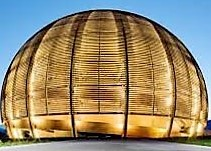Conveners
Tuesday - Session 1
- Carlo Bruno (The University of Edinburgh)
The cross sections of nuclear reactions relevant for astrophysics are crucial ingredients to understand the energy generation inside stars and the synthesis of the elements. In stars, nuclear reactions take place at energies well below the Coulomb barrier. As a result, their cross sections are often too small to be measured in laboratories on the Earth’s surface, where the signal would be...
One of the crucial ingredients for the improvement of stellar models in the framework of nucleosynthesis studies is the accurate knowledge of neutron capture cross-sections for the different isotopes involved. This type of measurements can shed light on the discrepancies between observed and predicted isotopic abundances by the stellar models and thus help to constrain the stellar media...
Radiative-capture reactions leading to the formation of 7Be bear a particular interest in the field of nuclear astrophysics.
The most important ones are the 3He(α,γ)7Be and the 6Li(p,γ)7Be reactions.
The former is one of the primary sources of uncertainty in the prediction of the 7Be and 8B neutrino fluxes, being the first reaction of the 2nd and 3rd branch of the p−p chain. Despite its...
Obtaining reliable cross sections for neutron-induced reactions on unstable nuclei nuclei is crucial to our understanding of the stellar nucleosynthesis of heavy elements. However, the measurement of these cross sections is very complicated as both projectile and target are radioactive. The NECTAR (NuclEar reaCTions At storage Rings) project aims to circumvent these problems by using the...
Nuclear reactions play a key role in the framework of the Big Bang Nucleosynthesis. A network of 12 principal reactions has been identified as the main path which drives the elemental nucleosynthesis in the first twenty minutes of the history of the Universe. Among them an important role is played by neutron-induced reactions, which, from an experimental point of view, are usually a hard task...
